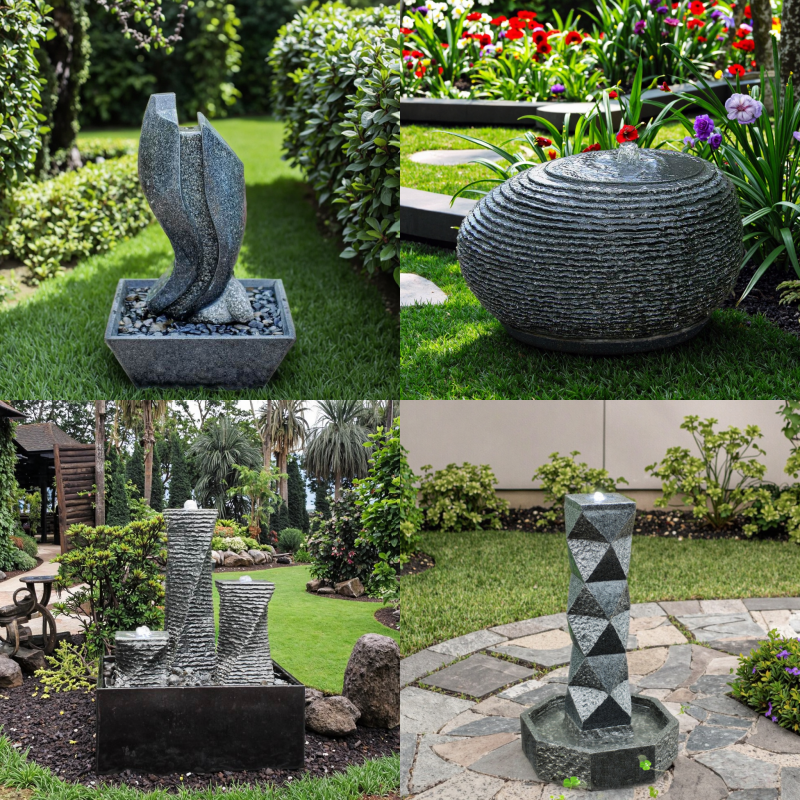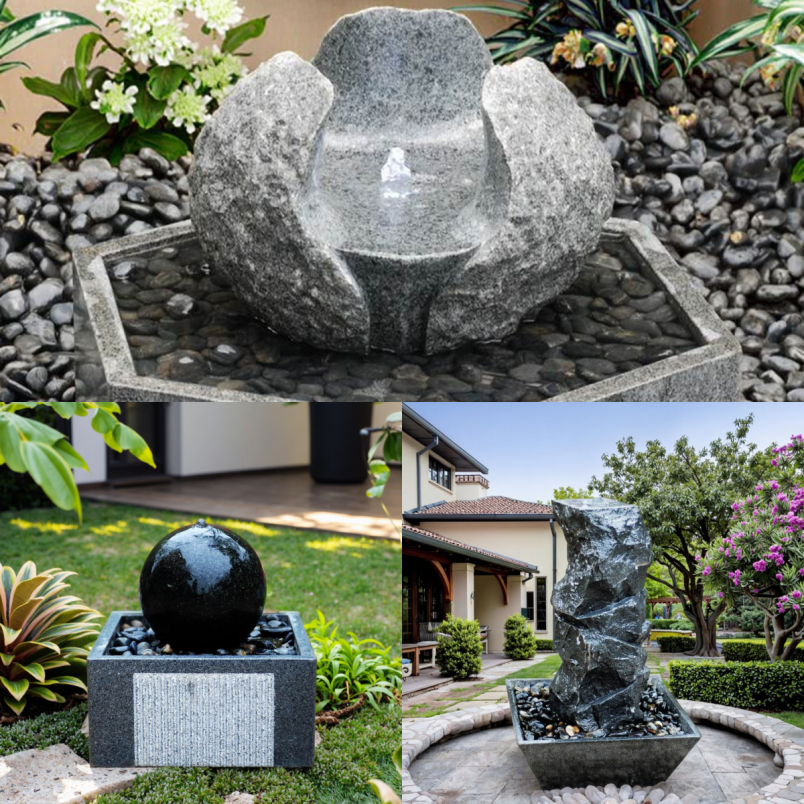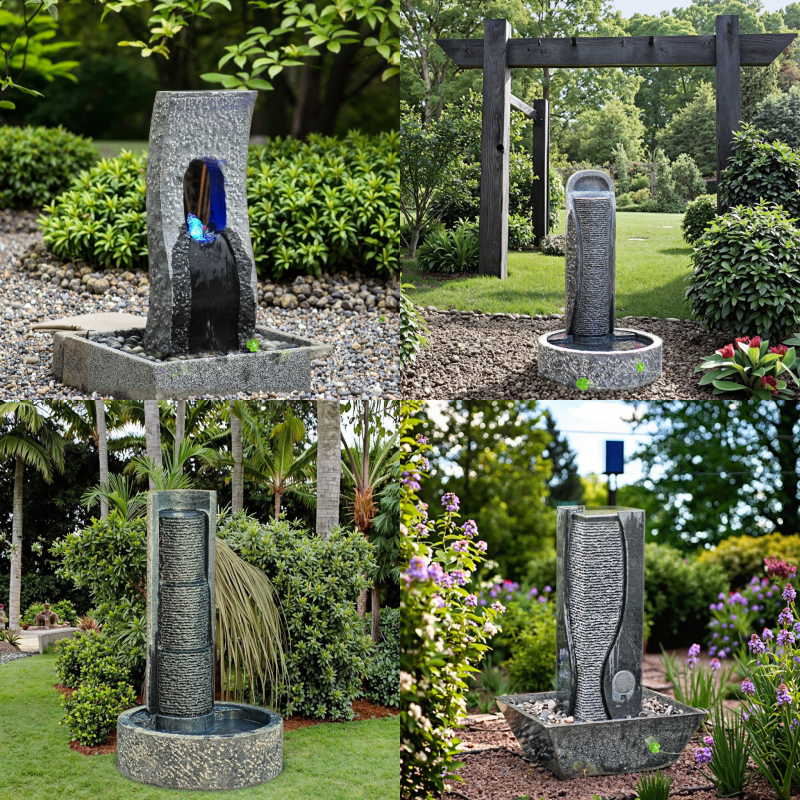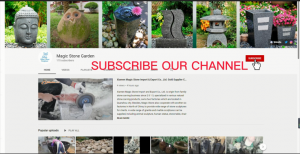Granite water features are a stunning addition to any garden or indoor space, combining the natural beauty of granite with the soothing sound of flowing water. However, maintaining their pristine appearance requires regular care and attention. Here’s a detailed guide to help you keep your granite water feature clean and in excellent condition.

Daily Maintenance
Skim the Water Surface: Use a skimmer net daily to remove any floating debris such as leaves, petals, and insects. This prevents debris from sinking to the bottom and decomposing, which can lead to odors and algae growth. Regular skimming also ensures the water remains clear and visually appealing.
Check Water Level: Briefly observe the water level daily. Granite water features can lose water through evaporation, and water loss can also indicate potential leaks around the basin or pump area. Top up the water as needed using dechlorinated water or let tap water sit for 24 hours to allow chlorine to dissipate before adding it to the water feature.
Weekly Cleaning Routine
Clean the Pump: Turn off the pump and disconnect it from the power source. Gently remove the pump from the water feature and clean it with a soft brush to eliminate dirt and algae buildup. Inspect the pump impeller for obstructions and clean it if necessary. A clogged impeller can reduce the pump’s efficiency and water flow.
Scrub the Basin and Granite Surfaces: Empty the water basin and scrub it with a mixture of mild soap and water. Use a soft brush or cloth to clean the granite surfaces, paying special attention to corners and crevices where dirt tends to accumulate. Rinse thoroughly to ensure no soap residue remains. Avoid using harsh chemicals that might damage the granite surface. For stubborn stains or algae, a mixture of equal parts white vinegar and water can be used. Apply the solution to the affected areas, let it sit for a few minutes, and then scrub and rinse.
Clean the Filter: If your granite water feature has a mechanical filter, rinse it under running water to remove trapped debris. For biofilters, gently rinse them with water from the water feature (not tap water) to preserve the existing beneficial bacterial population. If the filter media appears worn or clogged, replace it promptly.

Water Quality Management
Test Water Parameters Weekly: Use a water testing kit to check the water’s pH, ammonia, nitrite, and nitrate levels. Ideal pH levels for most water features range between 6.5 and 7.5. If the pH is too high or too low, add pH buffers to adjust it. Ammonia and nitrite levels should ideally be close to zero. Elevated nitrate levels may indicate excessive organic matter in the water, such as fish waste or decaying plant material. In such cases, perform a partial water change to reduce nitrate levels.
Algae Control: If algae growth becomes noticeable on the granite surfaces or in the water, first try reducing direct sunlight exposure. Relocate the water feature to a partially shaded area or use plants and structures to create shade. If algae growth persists, consider adding algae-inhibiting substances specifically designed for water features, but follow the product instructions carefully to avoid harming the granite and any aquatic life. Avoid using chlorine-based products on granite as they can be damaging.
Seasonal Care
Spring and Early Summer Preparation: Before the arrival of spring and early summer, thoroughly clean the granite water feature and inspect all components. Remove any debris or dirt left from winter. If the water feature was drained for winter, refill it and ensure the pump and filters are functioning properly. As plant growth accelerates during this period, monitor water quality more frequently and increase cleaning efforts as needed.
Autumn Care: In autumn, as leaves and petals fall more frequently, increase the frequency of debris removal. Consider installing a fine mesh screen or cover over the water feature to prevent leaves and other debris from entering the water. If the water feature has plants, trim and clean them to reduce organic matter entering the water.
Winter Precautions
Drain and Store: In regions with harsh winters, drain the water feature before freezing temperatures arrive. Remove all water from the basin, pump, and pipes to prevent ice expansion from damaging the granite structure. Store the pump and other delicate components indoors in a dry place. If the water feature includes stone or concrete elements, cover them with a waterproof tarp to protect against frost damage.
Use Heaters or Bubblers: If you prefer to keep the water feature running year-round, install heaters or bubblers to prevent the water from freezing. Heaters maintain water temperature above freezing, while bubblers create water movement that hinders ice formation. When using heaters, ensure they are properly grounded and positioned to avoid direct contact with the basin walls or other hard surfaces, which could overheat and damage the equipment.

Dealing with Specific Issues
Stains on Granite: Granite can develop stains from waterborne minerals or organic matter. For mineral stains, use a commercial stone cleaner specifically designed for granite. For organic stains like algae or mold, a diluted bleach solution (one part bleach to ten parts water) can be applied, but rinse thoroughly afterward to prevent damage to the granite. Alternatively, use oxygen bleach, which is gentler on stone surfaces.
Lime Scale Buildup: If your water is hard, lime scale can accumulate on the granite surfaces and in the water feature’s components. Use a lime scale remover suitable for stone surfaces to dissolve and remove the buildup. Regular descaling can prolong the life of your water feature and maintain its aesthetic appeal.
By adhering to these maintenance tips, you can keep your granite water feature clean, visually appealing, and well-functioning. A well-maintained granite water feature will not only enhance your garden’s beauty but also create a peaceful and relaxing atmosphere for you and your loved ones to enjoy.

Post time: Apr-23-2025




